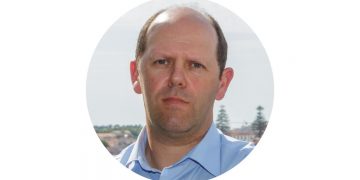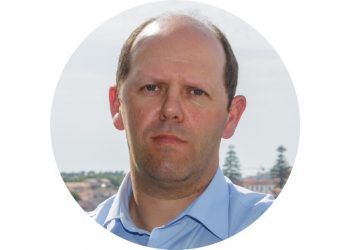In an old-growth forest in Slovakia, dozens of sensors are placed in the soil, tree trunks and air. The devices are tracking how soil hydrology and tree growth affect carbon stored in the ground.
This round-the-clock electronic watch in the Dobroč forest is part of Europe’s largest research project into the central – but little understood – role of forest soils in the fight against climate change. Called HoliSoils, the initiative began in May 2021 and runs through October 2025.
Dream project
‘It’s a dream project,’ said Raisa Mäkipää, who leads HoliSoils and is research professor at the Natural Resource Institute in Finland. ‘Soils really matter but they are understudied, especially forest soils.’
While trees draw carbon dioxide (CO2) from the atmosphere through photosynthesis, forest soils capture carbon by acting as a home to myriad organisms such as earthworms, springtails and woodlice. These organisms, or “soil fauna”, feed on fallen leaves as well as other dead tree and plant material that contains carbon, incorporating it into the ground in the process.
Soils remove about a quarter of global fossil-fuel emissions, making the earth beneath humankind’s feet an essential ally in the fight against climate change and the more severe storms, floods and droughts it is causing.
As much as 80% of carbon found in land ecosystems is contained in soils. And while the world over the past 10 000 years has lost a third of its forests, they still cover around 4 billion hectares – or 31% of the total land area.
By learning more about how forest soils trap and release CO2, countries can help ensure that their woodlands both adapt to climate change and ease it.
Better sequester
‘A better understanding of soil processes is essential for calculating the potential of forest ecosystems to sequester and store carbon as part of climate-change mitigation,’ said Dr Michal Bošela, a lecturer at the Faculty of Forestry of the Technical University in Zvolen, Slovakia.
“Soils really matter but they are understudied, especially forest soils.
Bošela runs the HoliSoils work in the Dobroč forest, which covers 100 hectares in a mountainous central part of the country. It’s a nature reserve with primarily European beech and silver fir trees that have had a protected status since 1913.
The forest was chosen by the researchers because it is surrounded by younger, intensively managed woodlands made up of spruce monocultures. This allows comparisons to be drawn between the monocultures and the old-growth forest with its mix of tree species.
At present, the regular reporting by countries of their greenhouse-gas emissions as part of efforts to limit them is constrained by a lack of data, knowledge and expertise – a gap that recent draft European legislation on soil monitoring could also help address.
In many countries, the capacity of a forest to absorb and store carbon is estimated mainly from the contribution of all living plants above ground.
HoliSoils brings together 18 universities and research institutes from across Europe as well as two research organisations in Japan and Uruguay.
Inventory upgrade
The aim is to enable countries to improve and align the way they monitor soils – a crucial part of national inventories for the carbon footprint of activities related to land use, land-use change and forestry, or “LULUCF” in the widely used shorthand term.
“Soil fauna is much more important than we previously believed.
‘We have the best experts in Europe and sufficient partners and funding to address all the various aspects of forest soils,’ said Mäkipää.
HoliSoils works closely with initiatives under an EU mission to improve soil health. One such initiative, called Benchmarks, is developing a system for transparent and harmonised soil monitoring.
In addition to the Dobroč site, HoliSoils is examining more than 20 areas including a peatland forest in Germany and Mediterranean forests in Spain.
The researchers have reached some preliminary results on forest management.
For example, regarding drained peatland forests the team has concluded that avoiding further ditch digging allows moss to cover old ditches, raises water levels in the soil and reduces its release of CO2 as well as methane, according to Mäkipää.
‘We have found a way to manage peatland forests more sustainably,’ she said.
Water and worms
Another EU-funded research project looked specifically at the role of water in carbon storage by forest soils.
Called DRYSOM, it ended in March 2023 after almost four years. The goal was to understand how recurrent summer drought affects the ability of forest soils to act as storers of carbon.
The DRYSOM team used data from a separate investigation of the effect of irrigation on pine and oak trees in Switzerland. The trees belong to the Pfyn-Finges forest in the Swiss canton of Valais.
Since 2003, half of the plots have been artificially irrigated in summer while others have been exposed to the valley’s increasingly dry conditions resulting from global warming.
The DRYSOM researchers found that the soils of irrigated plots sequestered more carbon because more fauna was present.
‘It was our most significant finding,’ said Dr Frank Hagedorn, who led the project and is head of biogeochemistry at the Swiss Federal Institute for Forest, Snow and Landscape Research, or WSL.
The researchers recorded five times fewer earthworms in the dry areas than in the irrigated ones. Smaller organisms such as springtails and woodlice were also less numerous in the dry areas.
The broader lesson is that, if forest soils become too dry, the number and activity of their fauna are reduced. That in turn limits the capacity of the soils to store carbon.
The DRYSOM team is recommending to policymakers in the EU that forest monitoring programmes and climate-change studies place greater emphasis on soil fauna.
‘Soil fauna is much more important than we previously believed,’ said Hagedorn. ‘It can drive changes in soil carbon and it is highly sensitive to changes in climate, especially dry conditions.’
Research in this article was funded by the EU’s Horizon Programme including, in the case of DRYSOM, via the Marie Skłodowska-Curie Actions (MSCA). The views of the interviewees don’t necessarily reflect those of the European Commission. If you liked this article, please consider sharing it on social media.
EU Mission: A Soil Deal for Europe
“A Soil Deal for Europe” seeks to reduce pollution in the ground and protect the numerous species that live in it. Today, an estimated 60-70% of EU soils are unhealthy.
The Mission reflects soil’s role as a foundation for food production, fresh water, biodiversity and cultural heritage. 100 test sites, including on individual farms, will spearhead the Mission’s aim to transition to healthier soils by 2030.
Read more about the EU’s Soil Mission here.
Watch the video
O artigo foi publicado originalmente em Horizon, the EU Research and Innovation Magazine.



















































